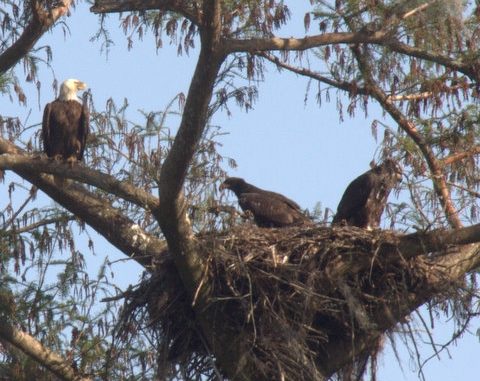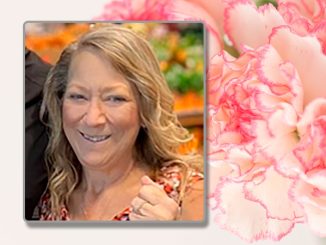
American symbol observed throughout the parish
For five years, Sandy Johnson of Luling has been trying to get a close-up photograph of eagles while on her daily run on the levee path.
“They perch in trees and on a telephone pole not to far from my front yard,” Johnson said. “I often stop in amazement and watch them. On this particular day, the eagle came to me. We watched him fly over head in our back yard with something in its claws.”
Landing about 50 yaras away, she grabbed her Nikon with the zoom lens and finally snapped her eagle photograph.
She determined the eagle was eating a duck.
“We watched it for about an hour,” Johnson said. “When it was done eating, it let the remains of its lunch fall to the ground. It was an amazing sight to watch, and I am more than likely never going to experience this again. My patience paid off. Eagles are a creature of habit. I know this because I see the eagles return to the same area year after year.”
Johnson’s account of her eagle sighting and her excitement over seeing the nation’s most powerful symbol in action is made possible by the restoration program that brought them back from near extinction.
The eagle also represents one of nature’s top comebacks.Every eagle sighting represents the 40-year fight to bring them back from nearly vanishing from hunting and pesticide use.
The Louisiana Department of Wildlife and Fisheries latest bird survey shows the Louisiana Bald Eagle is doing equally well.
According to Michael Seymour, department ornithologist, showed there were at least 520 nests active at least once in the last 10 years.
Some 647 nests were surveyed primarily in the Barataria-Terrebonne Basin where the eagle population is the most abundant of anywhere surveyed, Seymour said.
Latest available numbers show at least 64 nests discovered active as of April 6, 2015. The nests had chicks at least 4 to 5 weeks old at the time.
Of all bald eagle nests observed, Seymour said 356 were deemed active, representing an estimated 55 percent of all surveyed nests.




Be the first to comment